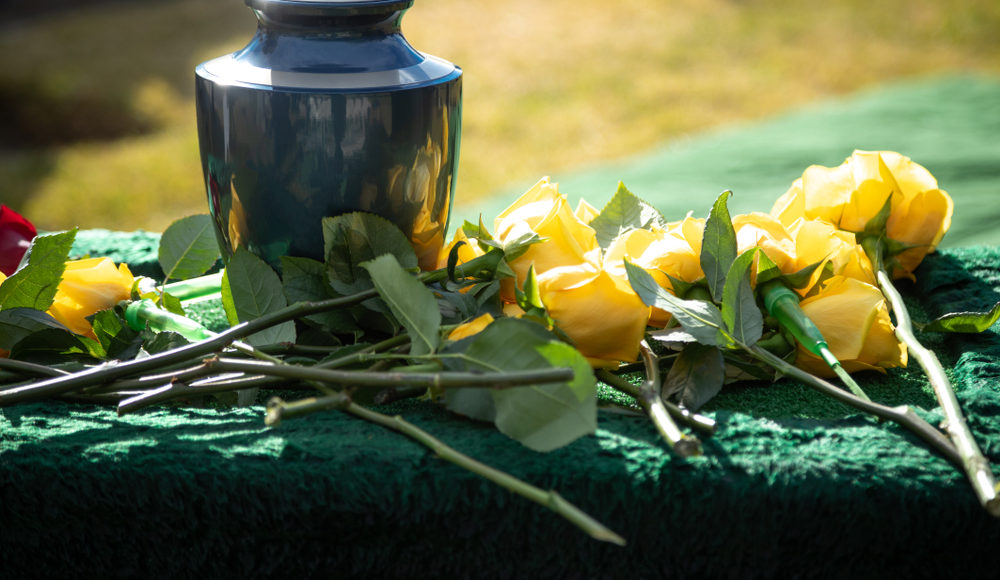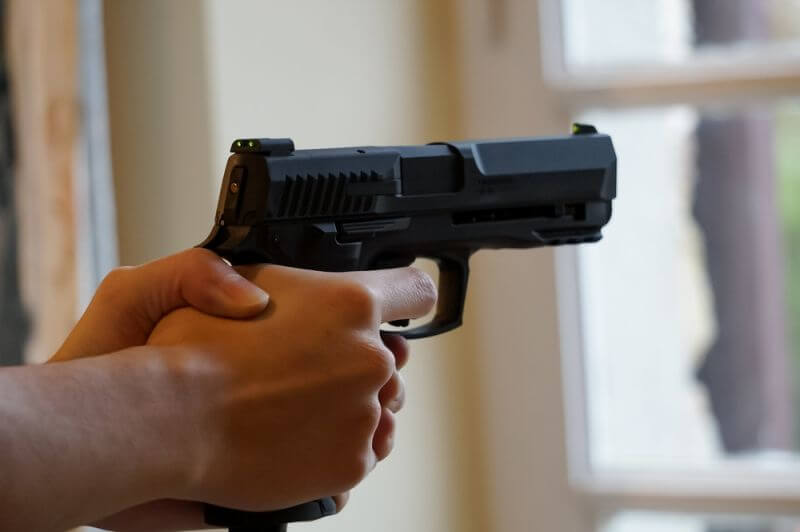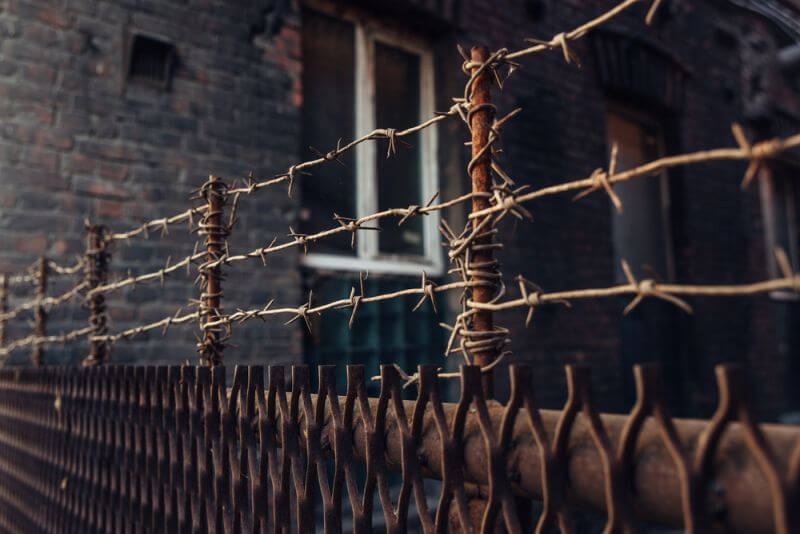Life always comes to an end, and we have to acknowledge this sooner or later. We prepare to survive and outlast pretty much anything the future throws at us, and we delay the end as much as we can. However, there’s little to no information within our community regarding the failure of our prepping plans that may lead to the passing of our loved ones.
I’ve often covered the topic of dealing with this final act of life and how one should handle and dispose of corpses properly. It seems that this is something many folks out there tend to ignore, and they often find the subject too grim to be stomached.
I, for one, am a realist, and I think that we need to be prepared for anything, regardless of whether it makes us uncomfortable or not.
I’ve been looking into the topic of backyard burials for quite some time now, and it seems that green burials are much more common than one may think. It all started last year when my father-in-law casually talked about life and death during one of our family’s gatherings. Since the pandemic was in full effect and since he is part of a vulnerable category, he wanted us to know that, when the time comes, he wants to be buried on his land.

So, my wife and I started looking into the green burial topic, and we did a little bit of research regarding the legal and practical considerations of backyard burials. Hopefully, this article will help those who want to learn more about what a backyard burial implies. Perhaps, it will provide helpful info to those who are still uncomfortable with managing the final act of life.
The way things come to an end
Not so long ago, town churchyards and family land used to hold bodies buried in biodegradable boxes. Entire generations of families were once buried on the same property where they lived. Cremation seems a more popular alternative than conventional embalming and oversized, expensive, non-biodegradable caskets.
It seems that people would instead make peace with nature and rely on funeral methods that support and heal it rather than disrupting and harming the natural environment with the building of conventional cemeteries. Green burials and cemeteries are becoming more and more popular, and many folks are looking for ways to return to family plots on private land.
There are several options in our country when it comes to burial ground types. Here are the options currently available:
Conventional cemeteries: These are the burial grounds that require a vault to prevent any depressions from forming where the soil over biodegradable caskets has settled. Embalming is often needed.
Hybrid burial grounds: These types of burial grounds may work as a conventional cemetery, but they also offer the option for a burial that does not require a vault, concrete box, slab, or partitioned liner. They do not require embalming, and they often allow eco-friendly burial containers, like shrouds. From what I’ve gathered from my research, many cemeteries across the United States are considering switching to a hybrid burial ground system.
Green burial grounds: These burial grounds do not require any vault or concrete slab. They must adopt a waste-minimizing and energy-conserving practice, and the use of toxic chemicals is prohibited. The burial container must be made from natural or plant-derived materials. They usually have a pest control and management program to maintain a natural look and minimal impact on the ecosystem.
Conservation burial grounds: These are similar to the green burial grounds, but they have a goal for perpetual land conservation, and usually, an organization guarantees long-term stewardship so that the land is preserved for decades to come.
Defining a backyard burial and other considerations
A backyard burial can be defined simply as burying a person on a residential property or privately owned land that is not endorsed as an official cemetery. This doesn’t mean that you can do a burial when the time comes and call it a day.
Many laws regulate this practice, and these laws vary from state to state. These laws that permit burial on private property are more common in rural areas, but they also differ from one county to another.
Suppose you consider this type of burial; you have to think of the implication for the property itself and the owner. For example, if you bury someone on private land, most certainly, the future sale of the property (and perhaps its value) may be affected.
You also have to consider the psychological aspect of no longer owning the property where your loved ones are buried. What will you do, and how will you feel after selling the land where your loved ones’ are resting?
You may have to make arrangements for the exhuming and transferring of the body, and these are expensive operations you have to take into account. Even if you manage to do so, the stigma remains, and it may be challenging to sell the property afterward.
In case you sell the property without the need for the body to be moved, chances are you won’t have access to the gravesite in the future. Even more, the property owner may have developments plans that will significantly affect the site’s character.
These are all things to consider, and you shouldn’t be discouraged if you wish to bury someone you love on the family property or if you want to be laid to rest on the property you’ve lived your whole life. I encourage you to seek legal consultation and guidance and start the planning process in advance since there is a lot of paperwork involved.
Legal considerations
If you want to plan a backyard burial, you need to consult your local health authority. This entity usually governs most of the laws regarding a green burial. It is pretty difficult to generalize what you need to check since, as I’ve stated previously, the rules vary by county to county, and there may be slightly different requirements from one town to another.
For example, backyard burial should meet specific environmental standards. Suppose you own land where ground drainage or water surface enters adjacent water sources such as ponds, streams, or wells. In that case, you cannot use the plot for burial purposes unless you have written approval from the environmental entity that governs your region.
For example, in the case of the region where my father-in-law lives, I’ve learned that the burial site should be 150 feet from a water supply and 100 feet from a drilled well. Another thing we’ve learned is that the body must be buried at least 20 feet from the seatback on his property.
Also, you must get written consent from any mortgage or lien holders (if that’s the case for your land) before doing the burial. And lastly, you must meet all the requirements from your state to complete the death certificate, such as acquiring transport permits and other mandatory documents.
Another thing that we found out from one of his neighbors is that there are companies that can draw a map of the property showing the burial ground, and they can also file it with the property deed. This will make the location clear, and everyone will know about it regardless of what will happen with the property.
Even more, you are required by law to disclose if human remains are buried on your land if you decide to sell the property. You will be needed to provide the records of the disposition of human remains on the property.
Preparing the gravesite
When preparing the gravesite, you can hire a crew to help you with these tasks or take care of this matter yourself.
You will need to choose a gravesite free of boulders and tree roots. You also need to pay attention to the soil you’ll be digging in where the gravesite is located. Sandy soil and light loam are more accessible to excavate than heavy clay soil. If the soil is too sandy, there’s a risk of the grave collapsing just as you’re digging it. It’s always safe to pick a site with firm and easy to dig the soil.
Also, when digging the grave, you need to check your local laws regarding the required depth of the grave. You may not have to dig six or seven feet deep, and you may only need to make the grave three to four feet deep.
For the digging part, it is recommended to avoid using heavy machinery since if you go down that path, you will not be able to preserve the natural setting of the gravesite. It’s much better if you stick to the backhoe or a shovel for the digging operation.
Keep in mind that digging a graveyard is a lot of work, and you may not be able to do it on your own. Since this is a time and energy-consuming activity, you may require the help of one or two more people to help you do a good job.
One tip is to measure the container buried before you start digging. This is especially mandatory if you won’t use a stander grave liner or casket, and it will help you avoid digging a grave larger than what’s required.
Most folks will not have access to a professional lowering device regarding the internment. They will need to use ropes or straps and enough manpower to lower the container properly without any incidents. You will need six to eight physically capable folks, each handling their rope or strap, for the lowering.
Suppose the deceased will be buried in a nonrigid container or a shroud. In that case, the body needs to be placed on a wooden board to distribute the weight evenly, thus avoiding any accidents during the lowering stage. Plan for this before the funeral day and make sure you have enough people to give a helping hand.
Once the service is complete, you will need to close the grave, and this is often part of the funeral ritual as mourners take part in closing the grave. They may toss handfuls of dirt over the body or take turns returning whole shovelfuls of earth.
Return all the soil you’ve previously removed and make sure the grave is somewhat rounded at the top since this will allow for settling once the container and the body start to decompose. You can plant native plant species on the gravesite and its vicinity to restore the natural look of the gravesite.
Concluding
All life comes to an end, and the funeral is the final celebration of life. We have to acknowledge the life and death cycle and prepare for it accordingly. Although this is a difficult topic for many, we will all have to deal with the burial of a loved one at some point in our lives.
If the deceased wishes to be buried alongside family members on their property, you should consider the backyard burial option and make preparations in advance. The peaceful atmosphere of a green burial on your land offers relief, and it appeals to many people nowadays.
P.S If you want to learn more on how to survive anything, this is just the thing. And take this SEAL test! You will learn a lot from it!










TruthB Told | January 9, 2022
|
I have already made advance preparations to be cremated and the ashes scattered at sea. Problem solved for me.
Sally | December 28, 2022
|
Same here.
Lacking cremation facilities just hail my body out into the ocean, weight it down and give me the old heave ho
Travelin On | January 9, 2022
|
Ditto on the cremation plan and being scattered at sea; but this isn’t about those of us who have made plans for ourselves after we die. All we have done is to let others know what we personally wish for ourself once we’re dead. That does not mean others in opposition to that choice are required to honor our wishes and what we’ve paid for. If they want to use their funds to do something different with our corpse that’s their choice. We will have no say and we won’t care. There are those who are highly opposed to cremation and since we’re not present to insist on how we are disposed of, those who are doing the doing can pretty much do as they need to or choose. What we’ve given people by making a plan for ourself is a legal “paid-for” option, provided that the country still has operable crematoriums, or whatever our choice has been, if we die during a total or whole economic failure. I really like the article and all the dedicated effort that Mr Rodgers has gone to in achieving this information and sharing it with us. Regardless of our plan for ourself, we may still have to consider how someone else’s corpse is disposed of who has no “paid-for” plan and, like Mr Rodger’s father-in-law, who has made their wishes known. My father had a very definite wish for his remains, but when the legalities were checked into after he died, it was not legal in either the state he died in or the state in which he ended up being buried, and so his wishes were not fulfilled, and his remains are where he didn’t really wish them to be. Reality is, burial and burial locations are really for those who remain behind, not for the one who has died. Odd how living people have such preferences for their own corpse when they won’t care once they’re dead. The reason I went with a cremation plan is because it was cheapest and I’d never be able to get a “paid-for” plan of any sort any cheaper, and all I wanted was a legal way to dispose of my corpse so no one else would have to worry about it if they didn’t want to. Honestly, I don’t care what happens once I’m dead because that will be the LAST thing I’ll be concerned about once this body becomes a corpse.
Florence Wheeler | January 9, 2022
|
Thank you, Mr. Rodgers, for a very insightful and helpful article! I can see it being particularly important if SHTF and everything is down! One other point I would add is that if cremation is available and acceptable, the burial is no problem at all. We simply scattered half my husband’s ashes around a memorial tree we planted on our property, and the other half in the Pacific! It WAS a bit hard to say goodbye again when the property was unexpectedly sold, but I turned my mind onto the fact that he really isn’t there, anyway, and focused on the fact that I WILL see him again in heaven–the burial isn’t really relevant! And his remains are still on the property he so enjoyed!
Kristi Harris Smith | March 26, 2022
|
It’s curious to me that I have been recently contemplating this very subject when coming across this article. All of my questions, and some I hadn’t thought of yet, answered in great detail by Mr. Rodgers.
Thank you so much for this information and your time researching it. Funny how things come around to us when we are not expecting them.
Again, much appreciation sir!
john silvers | December 29, 2022
|
I want to liver forever, so the plan is to be cremated, hike out to a spot way out in the wilderness and have my kids bury me underneath an oak or pine seedling. As it grows it sucks my ashes up and Viola!! Eternal life! As long as a wildfire or apartment building doesn’t get built on top of me.
john silvers | December 29, 2022
|
ooops…..live forever, not liver forever…Yucchhh!